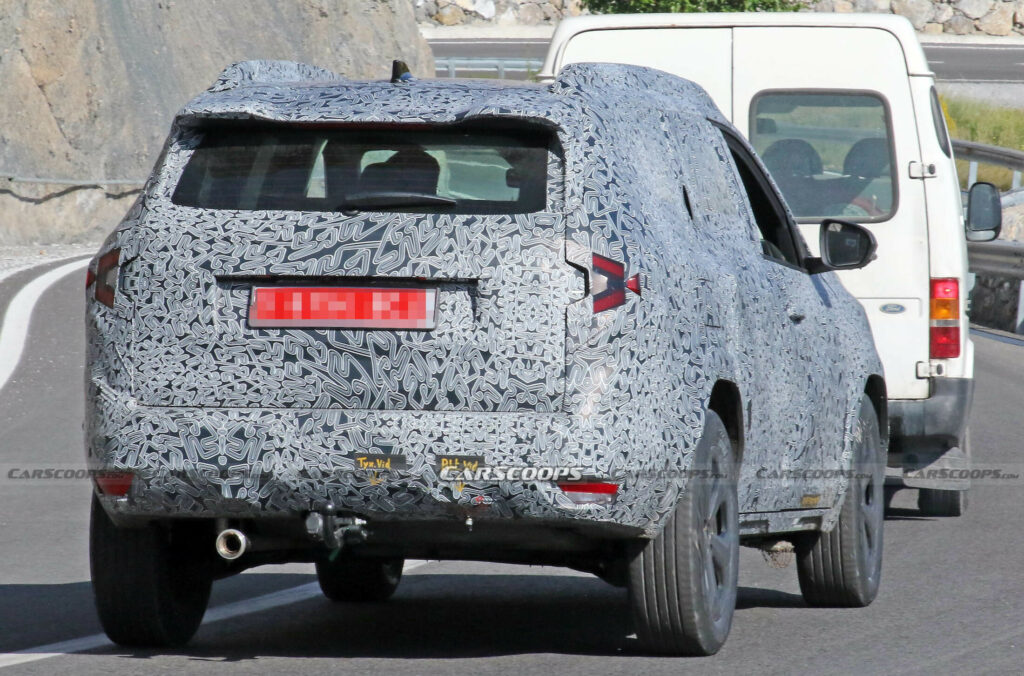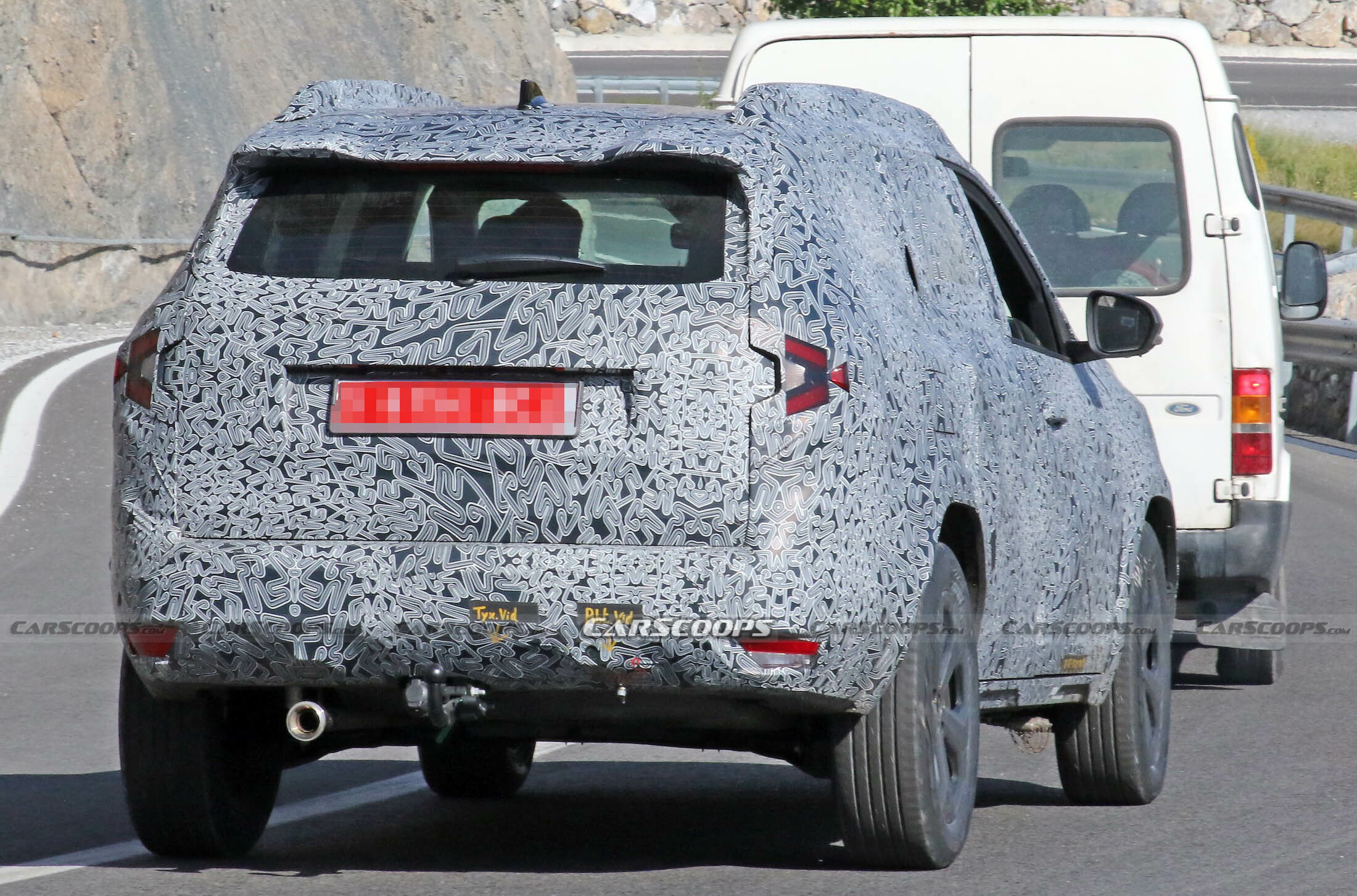- Dacia Bigster SUV prototypes spied for the first time.
- Up-scaled Duster is a production version of 2021’s Bigster concept.
- A third row of seats, all-wheel drive, and hybrid power are all expected to be available.
Renault has spent the last 25 years building Dacia into a major player whose small, bargain-priced Sandero was the second best-selling new car in all of Europe last year. But the 2026 Bigster pushes the Romanian automaker away from its cut-price roots and into new territory.
Our spy photo team has captured the production version of 2021’s Bigster concept in prototype form for the first time, revealing the visual similarities to both the Bigster concept and the latest version of the popular Duster SUV launched last November.
Related: Here’s What To Expect From Dacia’s 2025 Bigster
The Bigster shares the headlight and grille design, the squared fender openings, the muscular shape of the rear quarters, and the kick-up in the waistline past the C-pillar with the 2024 Duster, which in turn borrowed those cues from the Bigster concept.
And the links are stronger than skin-deep. The Bigster is effectively a longer, wider Duster, scaled-up to provide more interior width, plus the option of a third row of seats in the rear thanks to the bigger wheelbase and rear overhang. The smaller Duster is strictly fun for five and we predict base Bigsters will also come with just two rows of chairs, but a huge cargo bay.
We’re expecting plenty of crossover with the Duster when it comes to powertrains, meaning a mix of mild- and full hybrid engines, but probably not the base Duster’s 99 hp (100 PS) 1.0-liter TCe 100 Bi-Fuel motor that can run on petrol or LPG.

The other engines look like shoe-ins, though: the Duster TCe 130 uses a turbocharged 1.2-liter three-cylinder gasoline engine featuring a 48-volt mild-hybrid motor and an output of 128 hp (96 kW / 130 PS), while the Hybrid 140 generates 138 hp (103 kW / 140 PS) via a 1.6-liter engine and dual electric motors.
We’re fascinated to see if Dacia carries over its policy of not providing a touchscreen on the base trim, which buyers at this higher price level might not find appealing. Dacia says Bigster prices will be aligned with those of cars from the class below to continue the brand’s value philosophy. But even if it comes in at just €23,000 ($24,700) in base form, making it several grand cheaper than any of its C-segment rivals, this is still going to be the most expensive Dacia ever sold, by far.

























